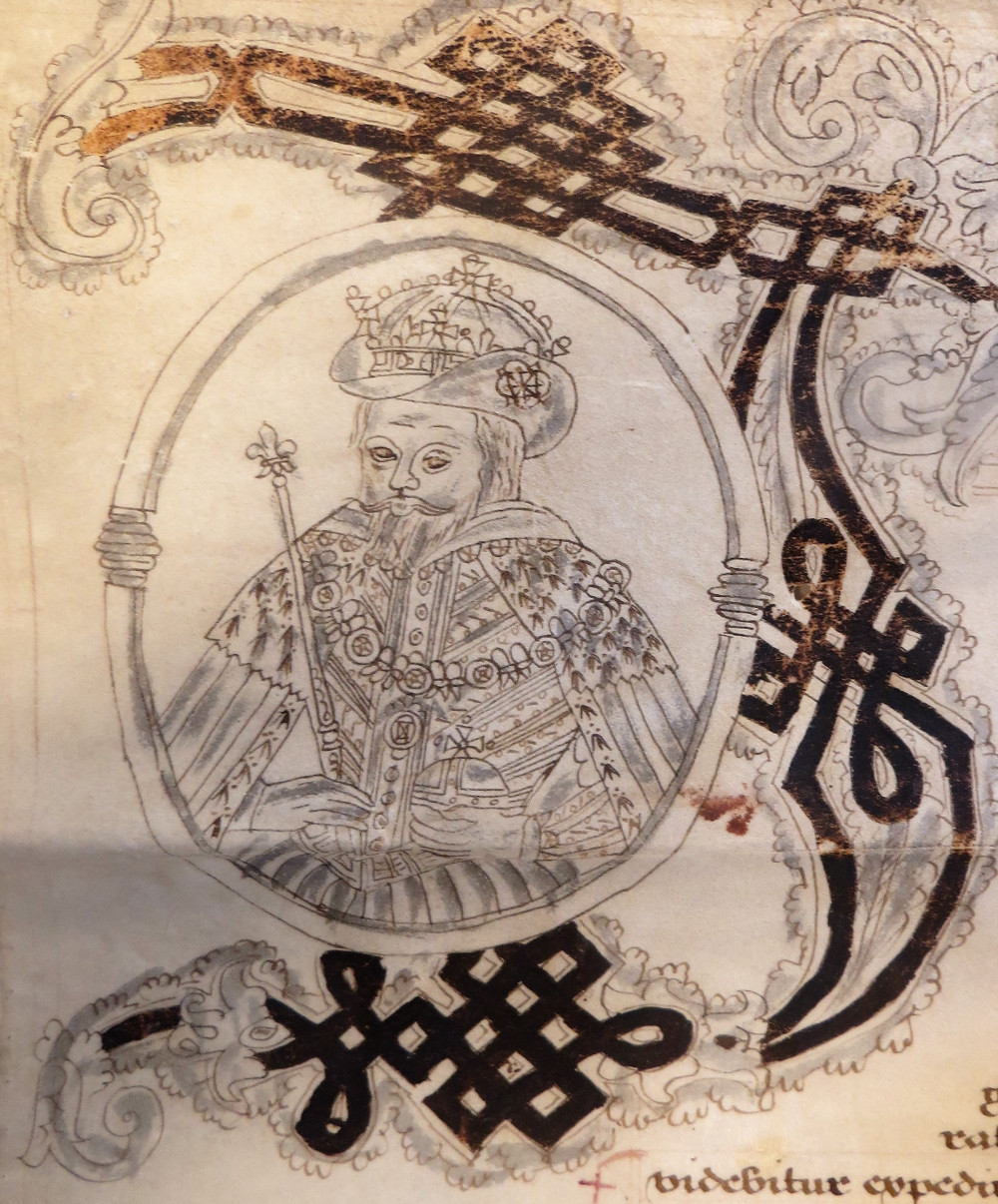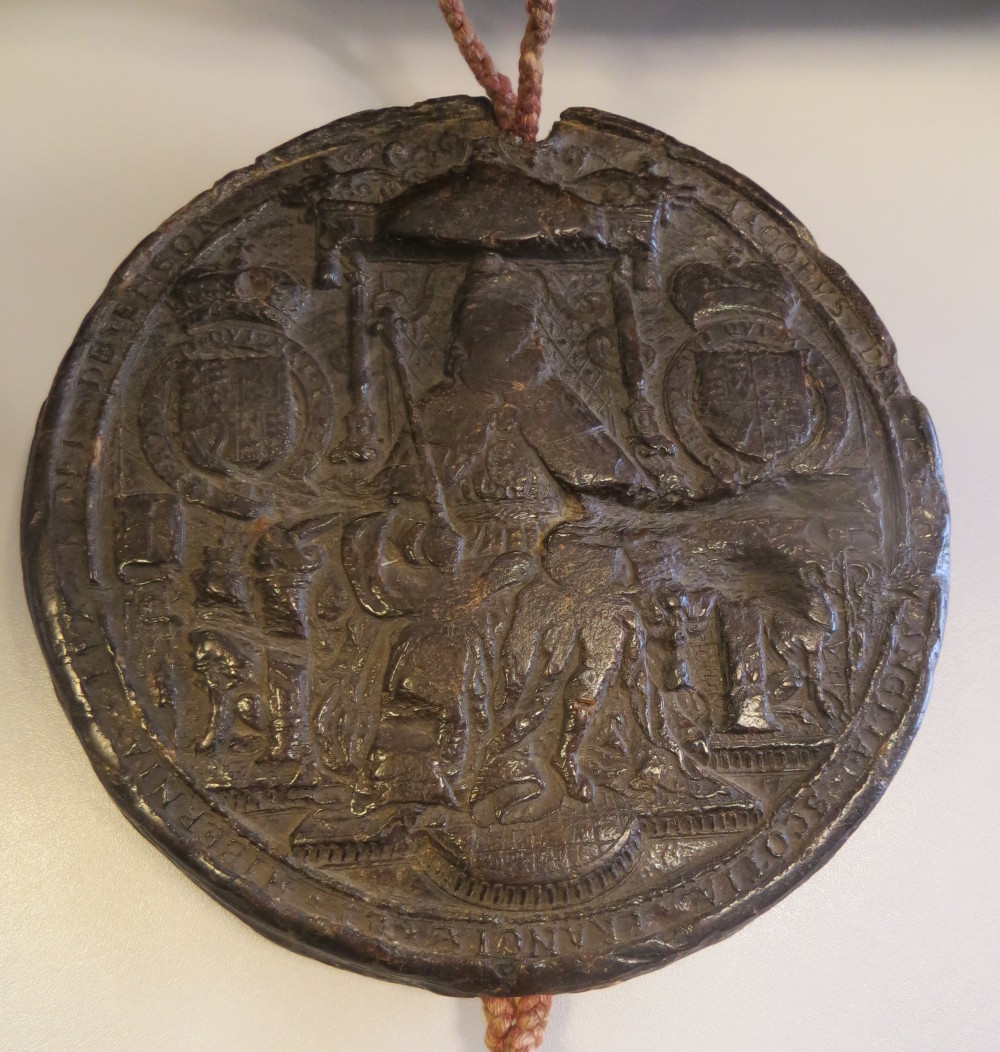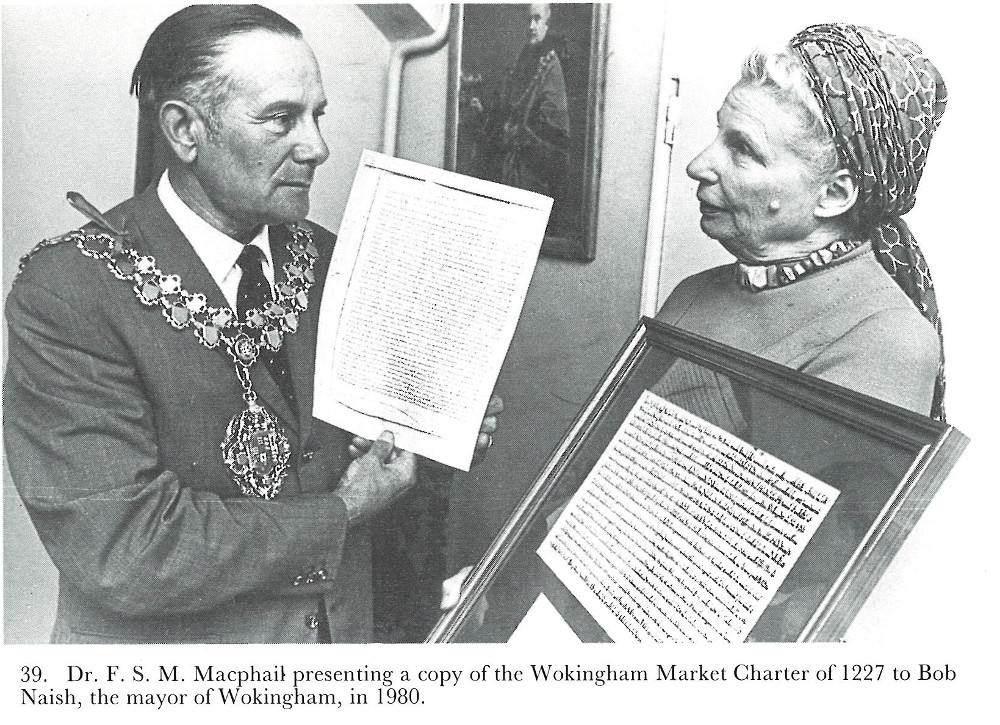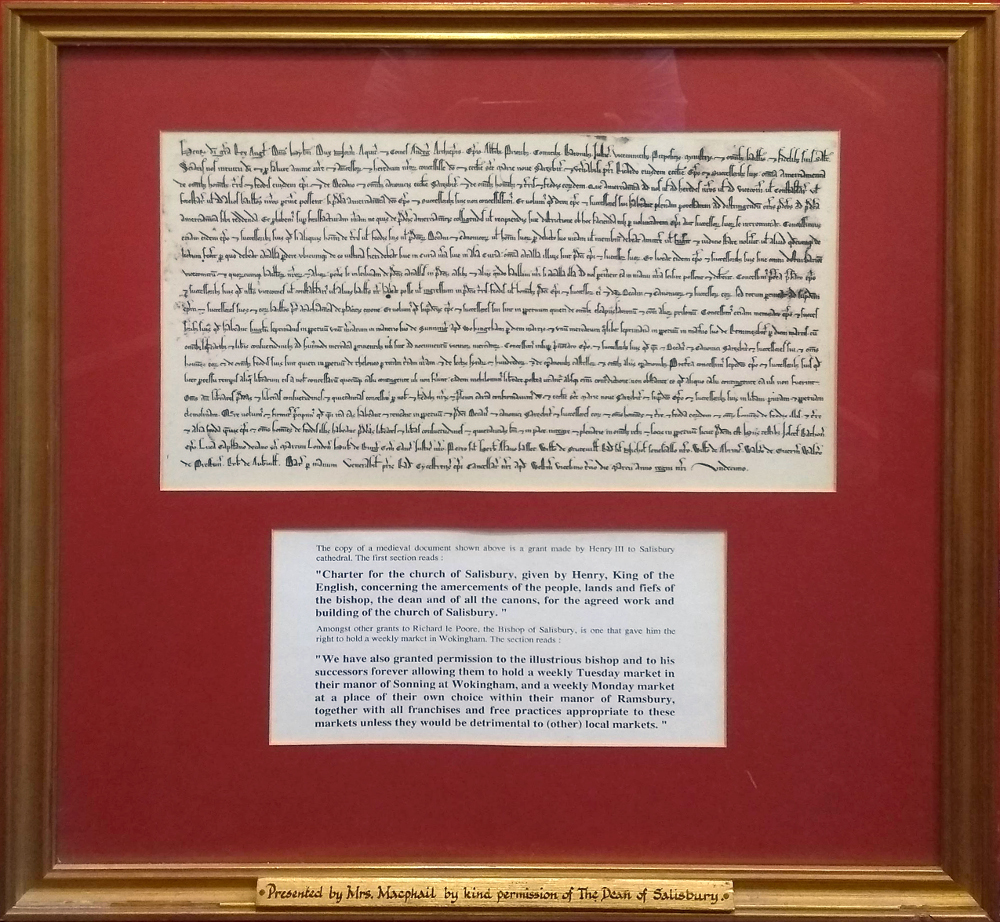This text provides a summary of the Wokingham Charters of King Henry III, Queen Elizabeth I, King James I and Queen Victoria. The full text can be found here.
King Henry III Charter:
King Henry III gave Richard Poore, the Bishop of Salisbury, a Charter dated 23rd March 1227.
Essentially the Charter relinquished the rights of the Crown (and its agents) to Amerciaments, a financial penalty imposed by a court and for these to be granted to the bishop, his agents and successors. These payments were to fund the building and maintenance of Saint Mary’s Church in New Sarum (ie Salisbury Cathedral). If someone committed an offence and for whatever reason did not pay the fine then all their chattels would become the property of the bishop (and agents). The bishop (and agents) were also given freedom from tolls throughout the land for “feudal services” The Charter also granted permission for bishop (and agents) to hold a weekly Tuesday market in Wokingham. It is from this period that Wokingham dates its origins as a market town.
Queen Elizabeth I Charter
The Charter of Elizabeth I, dated 9th February 1583, confirmed what had probably been a long-established transfer from church control to a manorial system of administration and justice in the town, its markets and fairs. This recites and confirms certain privileges enjoyed by the town of Wokingham, describing its Manorial courts as a leet held yearly about Easter and a Court baron held every three weeks, both held before the steward of the manor of Sonning in the presence of the alderman of Wokingham. At the leet the officers of the borough were selected, viz., one alderman, the chief official of the town, two constables, two bailiffs and two aletasters who were responsible for testing the quality and correct measurement of ale. These officers were chosen by the steward of the manor of Sonning with the consent of the alderman of Wokingham. Wokingham was then a “parcel” of the Manor of Sonning. The penalties and fines imposed by the courts were payable to the Crown, but the tolls collected from the market were retained locally to maintain a clockhouse in the Market Place, to keep that area clean and to use for other purposes. A market was held every Tuesday and fairs on St. Barnabas’ Day (11th June) and on All Souls Day (2nd. November).
King James I Charter
James I provided a Charter in 1612 which introduced a recognisable form of local government, with officers such as an Alderman, 19 Burgesses , seven being “Capital” and 12 “Secondary” and, still in existence today, a High Steward and a Town Clerk. The Charter also enabled the appointment of a “Recorder” and two “Serjeants for the Mace”. The “Recorder” or “Under Steward was to be a “discreet man expert in the Laws of England”. The first Alderman was named in the Charter as Anthony Bartlett Esquire and the first High Steward was named as Sir Henry Neville. The Charter described how the Burgesses and other officers should be replaced. These officers formed the Common Council with power to make bye-laws and enforce them by fines and imprisonment. Fines and court profits now went to the town rather than the Crown. A court was to be held every Friday to include the Alderman and the Recorder. Permission was also granted to erect a Guildhall and a prison or gaol to hold felons, trespassers and other wrong-doers. It is believed a Guildhall or Town Hall was actually already in existence some time before 1599. The Charter confirmed the long-established Tuesday market and granted a third annual fair on the Thursday before Shrove Sunday.
As a free town, Wokingham was granted a common Seal.
Queen Victoria Charter
In1885 Queen Victoria, granted Wokingham a Charter of Incorporation in response to a petition from 1,883 townsfolk who wanted to see some form of representational local administration. The Charter introduced a system of elected Councillors headed by a Town Mayor, and prescribed the boundaries of the town and its wards.
The Charter met the requirements of the Municipal Corporations Act of 1882 as follows:-
• To fix the number of Councillors, to determine the number and boundaries of the Wards and to assign the number of Councillors to each Ward.
• To fix the years, days and times for the retirement of the first Alderman and Councillors
• To fix such days, times and places, and nominate such persons to perform such duties and make such other temporary modifications of the Municipal Corporations Act as might appear to be necessary or proper for making these Acts applicable in the case of the first constitution of a Municipal Borough.
The Charter established the “Borough of Wokingham”. The number of Councillors was set to 12 and Wokingham Town Hall was named as the place for Notices to be affixed. Henry Tower Roberts was appointed as the Town Clerk and William Goodchild as Mayor. The new Wokingham Borough boundaries were defined in a FIRST SCHEDULE and the retirement dates for Councillors and Aldermen was defined in a SECOND SCHEDULE.
Wokingham Town Museum Unique Identifier: WTH0234




